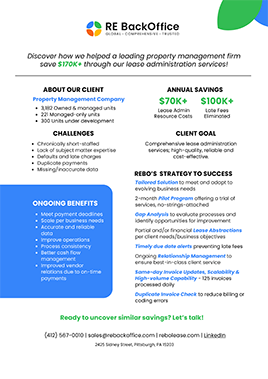
Casualty damage and destruction refer to significant damage or destruction of leased property due to sudden or unexpected events like floods, fires, storms, or other natural disasters.
Lease agreements often include casualty clauses, which specify the rights and obligations of both the landlord and tenant in the event of such incidents. These clauses cover aspects like lease termination, rent reduction or rent abatement, and the timeframe for repairs.
Types of Casualty Events
Partial Destruction:
Involves damage to only a portion of the property. In these cases, considerations arise regarding whether the tenant can continue their business operations. The lease may provide for rent reduction or rent abatement during the repair period, allowing the tenant to pay a reduced rent or no rent at all until the premises are fully functional again.
Complete Destruction:
Entails total loss of the property. This situation demands clear delineation of responsibilities for repairs and rebuilding. The lease typically outlines whether the landlord or tenant is responsible, especially if the tenant holds building insurance on the property.
Landlord and Tenant Rights and Responsibilities
Landlord Responsibilities:
If the landlord carries property insurance, they will receive insurance money to repair or rebuild the property. The lease may specify a timeframe within which the landlord must complete these repairs. For instance, if significant damage occurs late in the lease term, the tenant might have the option to terminate the lease and relocate. However, if the damage occurs earlier, the tenant may be required to wait for repairs.
Tenant Responsibilities:
Tenants are generally responsible for their personal property, including equipment and inventory. The lease should specify whether the landlord is obligated to replace tenant belongings damaged by a casualty. If not, tenants need personal property insurance to cover such losses.
Rent Abatement and Offset
During the period when the property is being repaired or restored, tenants may be entitled to rent abatement, meaning they do not have to pay rent, or rent offset, where they pay reduced rent. This provision helps tenants manage the financial burden during the downtime caused by the casualty.
Termination and Continuance of Business
The lease may provide the tenant with the right to terminate the agreement if the damage is extensive and repairs would take an unreasonably long time. Conversely, if the damage is less severe, the tenant might be required to continue the lease and resume operations once repairs are completed. These rights often depend on the extent of the damage and the remaining lease term.
Insurance Considerations
There are two types of casualties in the context of insurance:
Insured Casualty:
Both landlord and tenant receive compensation from their respective insurance companies. This insurance payout is used to repair the property and replace any damaged belongings.
Uninsured Casualty:
Neither party receives funds from insurance. The lease must clearly outline who bears the financial responsibility for repairs and replacements in such cases.
Notice to Rebuild
The lease typically includes a provision requiring the tenant to notify the landlord if they wish for the premises to be rebuilt after a casualty. This notice must be given within a specified period following the damage. The landlord then has an obligation to repair or rebuild the premises, as stipulated in the lease.
Practical Scenarios
Partial Damage with Significant Lease Term Remaining:
If a property suffers partial damage early in the lease term, the tenant might not have the right to terminate. They would need to wait for the landlord to complete repairs, with possible rent abatement during this period.
Complete Damage Near Lease End:
If complete destruction occurs near the end of a lease term, tenants may prefer to terminate the lease and relocate rather than endure the repair period.
In conclusion, casualty clauses in lease agreements are essential for outlining the procedures and responsibilities in the event of property damage due to unforeseen events. These clauses ensure both landlords and tenants understand their rights and obligations, helping to mitigate the financial and operational impacts of such incidents. Properly drafted casualty clauses provide clarity and protection, allowing both parties to navigate the aftermath of natural disasters and other casualty events effectively.


